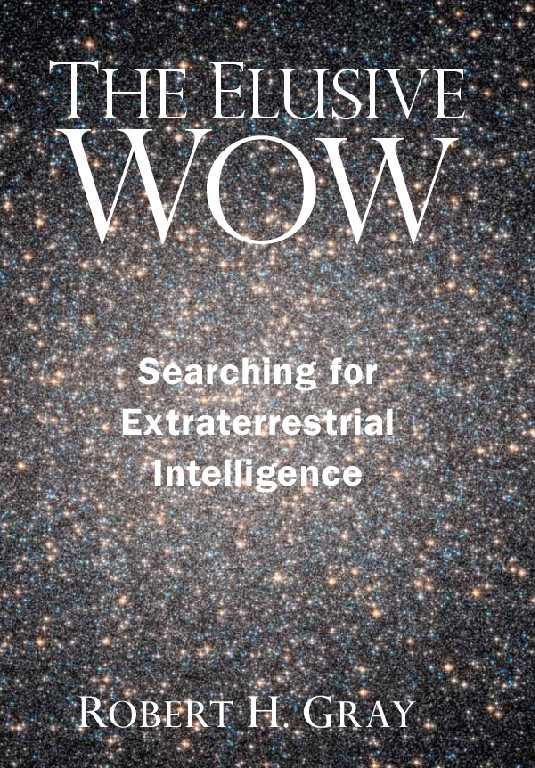by Robert H. Gray
Palmer Square Press, December 2011
ISBN 978-0-9839584-4-4, hardcover, 256 pages, $29.95

 Publications Department
Publications Department

Bob Gray is chasing a ghost, something seemingly ephemeral that can neither be confirmed nor denied. Some would say he's obsessed with it. It's the same magnificent obsession that drove artists and architects of old to devote their lives to creating the wonders of the Renaissance. For nearly thirty years, the amateur radio astronomer from Chicago has been on the trail of the elusive Ohio State University "Wow!" signal, the most promising, yet enigmatic, SETI candidate to date. His new book documents his efforts, and his frustrations.
"The Elusive Wow" is really two books in one. The first part begins with a detailed account of the reception on 15 August 1977, at the "Big Ear" radio telescope facility, of a microwave signal exhibiting all the characteristics one would expect of a message from extraterrestrial intelligence, except for one: it disappeared, never to repeat. Gray describes that initial detection as a tug on the cosmic fishing line, intriguing but inconclusive. Lacking verification at the locus of initial reception, Bob set out on a quest to duplicate the detection, by casting a broader net. He devotes half a dozen chapters to his observations, first from his own backyard radio telescope (a design which presaged The SETI League's later Project Argus instruments), and later from Harvard, Tasmania, and the Very Large Array. In all cases, his net came up empty. His fascination and frustration are equally palpable.
The second half of the book is a more conventional treatise, and those not well versed in SETI folklore should probably read it first. In eight chapters (seven of which are reminiscent of the seven factors of the Drake Equation), Gray lays out the basics of SETI science. He includes a good historical overview of searches since Project Ozma, and offers his own insights into the Fermi Paradox: "Where are they?"
The book concludes with an exhaustive bibliography which should prove useful for those wishing to delve deeper, as well as a good list of web links (some, unfortunately, no longer valid, as is the nature of the Internet), a collection of formulas which should help those readers bringing themselves up to speed on radio telescopes and communications technology, and a photo gallery of some of the SETI enterprise's key players (including a delightful one of Paul Horowitz as a very young radio amateur).
My only disappointment in reading this otherwise fascinating book is that The SETI League and its Project Argus all-sky survey merited only the briefest one-sentence mention, and that merely to differentiate our search from an Ohio State University antenna design of the same name. In fact, it would have served Gray well to have devoted a chapter to the efforts of other amateur radio astronomers. We are, after all, members of a large and very mutually supportive community. Some of us even share Bob Gray's obsession.
email the Webmaster | entire website copyright © The SETI League, Inc.; Maintained by Microcomm this page last updated 25 February 2012 |
Top of Page |